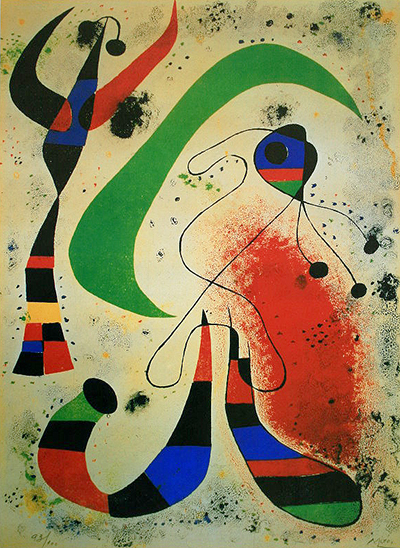Most famous artists are closely associated with a specific movement in art history, but this is not always the case: some are hard to pin down. Amongst these is the Spanish painter Joan Miro.
Miro is often described as a surrealist painter - which is a very broad label - but the truth is that he was very much an independent spirit in terms of art. His paintings are truly unique, and can never be mistaken for the work of another artist. As with many other artists his aesthetic principles changed over time, and a look through his paintings will show a quite considerable evolution. Miro's early work is comparatively representational: although his compositions and use of perspective belong firmly in the world of naïve art, his general portrayal of form and shape shows a basic respect for physicality.
But as his art progressed, Joan Miro became ever less representative and moved closer to abstraction. His canvases began to show scattered fragments of scenes, with recognisable elements of buildings and people collapsing into abstraction. Other paintings by Miro show simply coloured shapes, with no pretences towards any form of representation. Miro's sculptures, too, follow this path, with loose shapes forming abstract patterns.
"Night" is an example of Joan Miro's artwork from his more abstract period. Exactly what it shapes depict is subjective, and will depend on each individual viewer's interpretation. The figure on the left resembles a bird, although it could conceivably be interpreted as some sort of tree. The green shape to its right - considering the title of the painting - could be a crescent moon, albeit a distorted one; although some viewers may read it as indicating the shape of a hillside, or perhaps a road. But what, then, do we make of the vaguely insect-like shape to the right? The red shape? The two striped bodies at the bottom of the frame? "Night" demonstrates one of the main appeals of abstract art: each person who examines the image will be able to draw their own conclusions as to what it represents.




